1989 Kawasaki ZX-10 “Tomcat”
With a trophy in the cabinet for the GPZ lineup, Kawasaki was likely feeling very good about their successes in the late 80s. There was no shortage of publicity and it only made sense to try and use the same formula to sell bikes while all the eyes were on them. The ZX10 “Tomcat” was the successor to the GPZ 1000RX, which was the GPZ 900’s bigger brother. While the 900 always overshadowed the 1000 due its role in the cinema, there was no doubt about a growing thirst for faster and faster bikes in the American market.
The ZX-10 was known mainly for it’s top speed. The motor was largely similar to that of the outgoing GPZ 1000 but one of the main differences included angled intake ports that called for a semi-downdraft carb. Improved aero and a lighter curb weight along with the engine is what ultimately allowed this bike to use all of its 131 hp to propel it to 165 mph. The frame was coined as an “e-box” frame as denoted on the front fairing. The use of aluminum was starting to really take off and was one of the major sources of stiffness and weight-savings in the era.
Evolution of the motorcycle during the 1980’s was elevated to new heights. Manufactures were taking the leap and pushing the limits of performance, speed and style and Kawasaki was at the forefront of this movement. The ZX10 was hailed as the new flagship performance bike for Kawasaki and took the world by storm in 1988 by building the world’s fastest production motorcycle for the 1988 model year. 135hp, 165mph top speed, quarter mile under 11 seconds, the ZX10 “Tomcat” was the bike everyone wanted to own, but never wanted to line up against. Cycle World Reported in 1988, “A motorcycle visually, mechanically and functionally awash in velocity, it is the new Sultan of Speed, a sportbike insuperable…. Nothing else mass-produced on two wheels even comes close. Now we have entered the Starship Enterprise era: “So radical is the engine’s intake-port angle that the tops of its canted Keihin carbs actually sit higher than the uppermost part of the cylinder head…” That engine’s now confined inside Kawasaki’s first aluminum perimeter frame, proclaimed “e-box” on the fairing because of “its egg-like oval shape when viewed from above.” Radial tires-17 inch front, 18 rear-and twin-piston brakes let the big Ninja stop in 107 feet from 60 mph, the shortest we’d ever recorded.”
This example with under 5k miles is an extremely nice example for any collector, rider or enthusiast. Bang for the buck and appreciating classics like this don’t last long, you won’t want to miss this one.
The GPZ and ZX-10 led to the battle between Honda, Kawasaki, and eventually Suzuki for the top speed crown. The Blackbird, ZX-11/12/14, and Hayabusa all traded heavy punches throughout the ’90s and early ’00s. While the Blackbird and GPZs have cemented their status, some of the Kawasakis have been lagging slightly but that doesn’t take away from their credibility as actual sport bikes. They were market pioneers and leaders in the segment with this bike. The example today has extremely low miles for a 1986 and seems to be in fantastic condition. The seller mentions there was a repaint done a while back but it is certainly hard to tell from the pictures. A Vance and Hines slip on and upgraded seat are mentioned as well.
The bike is listed at $5.9K but I suspect there would be some room for negotiation if you make an offer. The price is such that you can collect it or ride it without much worry. It’s no secret that bikes we can buy today aren’t the same as the 80s and 90s in terms of feel and emotion. The retro-inspired options offered today are nice to look at but lack some of the character provided by the motors and chassis of the decades past.
Thanks for reading!
Norm






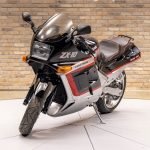
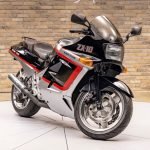


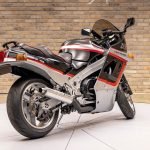

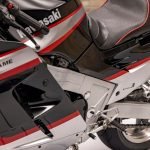

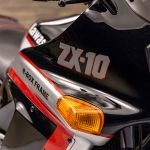
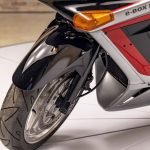
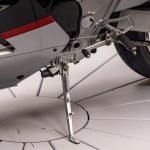
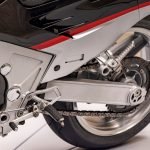









Nice example. Looks like the swingarm is a carry-over from the GPZ.
I went ahead and bought this one. Thanks for the great write up!
Congratulations!!